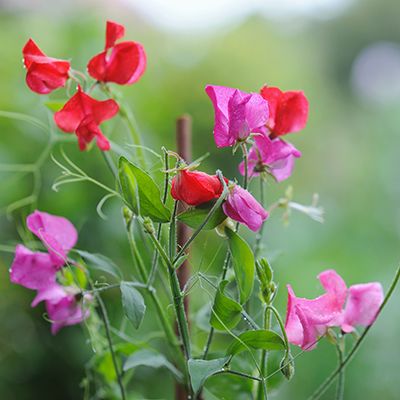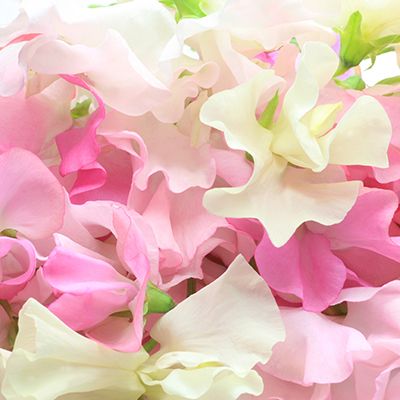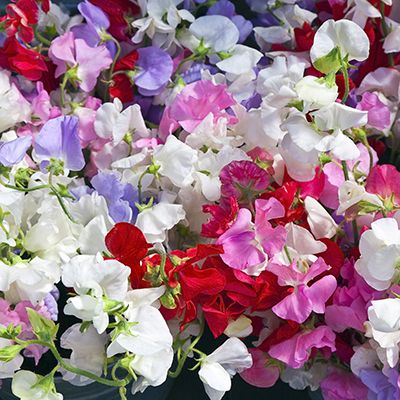


Sweet Peas
Sweet Peas may grow to be vines, six to eight feet tall or the dwarf forms will grow to three feet tall. The tall vines will need a support whereas the dwarf forms are suitable for areas of limited space such as a balcony or small patio. The dwarf forms will grow nicely in a 15 gallon sized container where the short vines can hang over the edge. If the vines drag on the ground, set the 15 gallon sized container on an inverted 5 or 15 gallon sized container to lift the plants off the ground.
The tall vines are best grown in the garden. Their support can be made by imbedding two posts at a suitable distance in the ground with a wire or line strung across the tops. A length of bird netting is draped across the line and held with plastic ties. The bottom of the netting is held down to the soil with U-shaped wire fasteners.
Both forms of Sweet Peas require full sun for a minimum of six hours per day. Plants grown in containers should use Master Nursery Gardener’s Gold Potting Soiland be fertilized at two month intervals with Master Nursery Rose and Flower Food.
Plants grown in garden soil will perform best in a bed specially prepared for them. Dig a trench one to two feet wide, six to eight inches deep and of suitable length. Add one-third compost such as Gold Rushinto the native soil taken from the hole along with 2 to 5 pounds of gypsum and mix thoroughly before returning it to the hole. Extra soil mix can be used to build a berm around the planting area which will hold the irrigation water in place. Sprinkle Master Nursery Rose and Flower Foodlightly over the newly prepared bed and water thoroughly to settle the soil mixture.
Some gardeners will pre-treat Sweet Pea seeds before planting. It is not needed and of questionable value. One pre-treatment consists of damaging the seed coat by nicking it with a file edge, nail clipper or sandpapering it through the seed coat. Another pre-treatment consists of soaking the seeds overnight in luke warm water.
Plant your tall vines six inches apart right next to the bird netting. Using your index finger, poke holes to a depth one-half the way between the first and second joint and drop two seeds in each hole. If you are planting in a container, make the holes four inches apart and about two inches in from the edge of the container. Cover the seeds with the soil mix and firm with the hand.
Water thoroughly after the seeds are planted.
Scatter Sluggo Snail and Slug Baitover the area. If birds become a problem, drape a length of bird nettingover the bed and leave until the plants are 6 to 8 inches tall.
When the seedlings have 3 to 4 pairs of leaves, pinch off the tops to leave 2 to 3 pairs of leaves. This will force the plants to branch and become bushier.
As the plants start to bloom in March, pick the flower stalks frequently and don’t let them form seed pods. The longest stems with the most flowers appear when the weather is coolest. As the days warm up, the stems become shorter and the flowers fewer per stalk. Finally, by June the plants are finished blooming.
Sometimes a few aphids may gather on the tips of the plant. These can be controlled with Safer Insect Killing Soap or for the do-it-yourselfer make your own spray by mixing one tablespoon of liquid Castile soap in a quart of water and use that for the spray. Do Not use dishwashing liquid (Joy, Dawn, etc.).
At the end of the blooming season, save a dozen or so of the seed pods when they start to turn brown, store them in a paper bag and use the seeds next year.